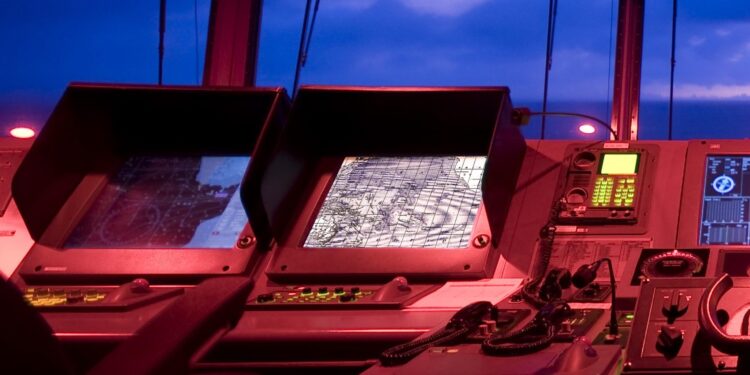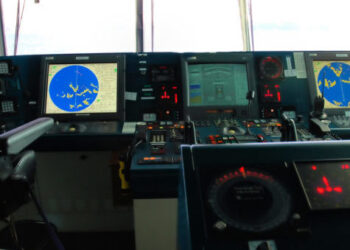The Shipowners P&I Club has issued bulletin to urge caution for the unauthorised and incorrect use of ECDIS.
With the advent of technology, the use of Electronic Chart Display and Information Systems (ECDIS) is becoming increasingly popular. While the use of an ECDIS does have its advantages, it can have a negative impact if not used correctly and this is known to be a causative factor in major claims such as collisions and groundings.
Due to the perceived cause of these incidents we would like to draw our Members’ attention to Regulation 19 of chapter V of the Safety Of Life At Sea (SOLAS) convention which permits an ECDIS to be carried as part of the on board navigational system, provided it meets the chart carriage requirements as detailed in regulation. The ECDIS must be type approved and in order to do so and it must meet the required performance standards (MSC.1/ Circ.1503, ECDIS – Guidance for good practice).
It is important to remember that personnel operating the ECDIS must have undergone appropriate ECDIS training. It is understood that the ECDIS training and certification requirements, as per the 2010 Manila amendments to the STCW code will not be in force before 1st January 2017. It is therefore advised in the interim, that Members should ensure navigating officers on board their ships using ECDIS are trained to existing standards such as the IMO ECDIS model course (1.27).
Notwithstanding the statutory training mentioned above, Members should ensure that navigating officers are familiar with the specific ECDIS model available on board through a familiarisation programme. As far as practicable, it is advantageous that the same make and model of ECDIS is installed on all fleet vessels to assist this familiarisation process. This would help to reduce the incorrect use of the ECDIS such as not including the correct layers of the electronic chart and helping to ensure that all the data available on the corresponding paper chart is displayed on the ECDIS.
If paper charts are the primary means of navigation on board the vessel, then it is imperative that all navigation, including, but not limited to, chart work, passage planning and position fixing is carried out using the paper charts. The primary source of navigation, whether paper charts or an ECDIS, should be kept updated at all times in accordance with SOLAS Chapter V/27.
If a non type approved ECDIS is discovered fitted on board a vessel, it is strongly recommended that the ECDIS be decommissioned to stop unauthorised usage. The prohibited use of these systems must further be emphasised by displaying prominent notices upon the equipment to show it is not to be used for navigation. Such measures should also be included in the shipboard navigation procedures.
































































There is a TIME LAG of at least ONE MINUTE, usually 2 to 3 minutes, between G.P.S. Updates of the Ship’s Position.
This makes the ECDIS Most Unsuitable for Navigation & Pilotage in close waters.
Unfortunately, to a Master / O.O.W. {Officer Of The Watch}, trained in Ship-Handling on SHIP SIMULATORS, the tendency is to keep an “ECDIS Watch” rather than a full-fledged BRIDGE WATCH encompassing ALL MEANS of LOOKOUT: VISUAL, By SOUND, By RADAR, By VHF & GMDSS.
This happens as the ECDIS collects all Navigation Information from various sources: Radar, ARPA {Automatic Radar Plotting Aid}, G.P.S., and, of course, the over-layered Sea Chart.
However, small objects like floating debris DO NOT SHOW UP ON THE RADAR especially in rough Sea Clutter, & POSITIONAL INPUTS are too infrequent for Pilotage relying on ECDIS alone.
As long as the operators: Master, O.O.W. & Pilot keep these inherent shortcomings of ECDIS in mind always, there should not be a Navigational Close Quarters Situation / Near Miss or a Collision / Grounding holding ECDIS as the proximate cause.
There can be no correct use of ECDIS! Because our 10-15s delay average of the past visual stimuli’s or clutter if you like. This we know to be the “continuity field” effect which kicks in when objects are close to each other i.e. Data on screens. Current training is waste of time and money and P&I Clubs, ECDIS makers & users would benefit from understanding our “normal “cognitive delays when we process visual data. When will we grasp the fact that current equipment design actually cause most of the accidents? Approved IMO training to cause accidents or avoiding the same by common sense and best practice based on default human limitations which are the human normal?
Kind regards,
JJ